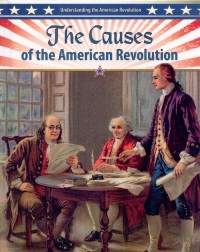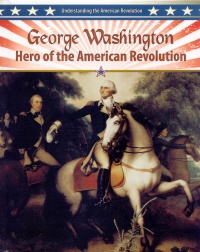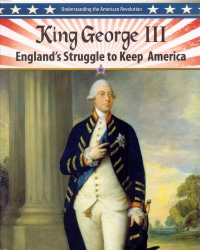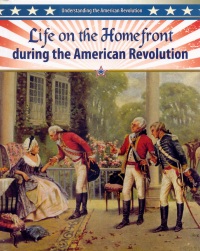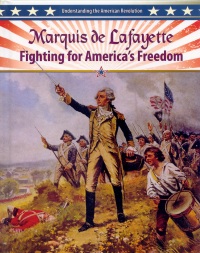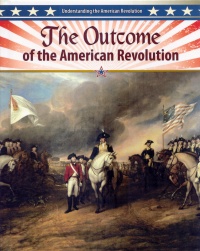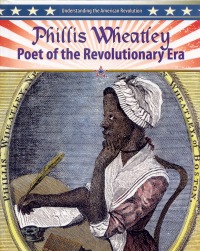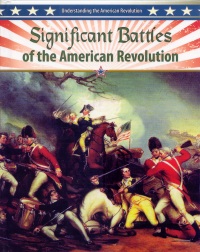| ________________
CM . . .
. Volume XIX Number 39. . . .June 7, 2013
excerpt:
This series, “Understanding the American Revolution”, provides an overview of many aspects of the American Revolution beyond battle dates and important white males. Even if you have enough books about the battles and causes, you may want to consider purchasing some of the books in this series that examine often overlooked aspects of any conflict, for example, what impact did war have on those left at home? The lives of African Americans during this time period are also documented in some detail, especially in the book, Phillis Wheatley: Poet of the Revolutionary Era. Unfortunately, less attention is paid to the lives and involvement of Native Americans in this conflict. None of the eight books in the series is primarily about a Native American. All of the books include maps showing “North America before the Revolutionary War” and “North America after the Revolutionary War”. The ‘before’ map clearly shows an extensive section of what is now the United States and Canada as “Indian Reserve”. The ‘after’ map omits any mention of Indian Reserve or other Native American land area. Significantly, in the book titled The Outcomes of the American Revolution, no mention is made of the outcome of the revolution on Native Americans. What happened to change the map and the mindset so dramatically? I would consider that an outcome worthy of reporting. Each book in the series is well illustrated with archival art, documents, and quotations and a few colourful photographs. A few key maps illustrate the locations of settlement and significant battles during the conflict. The layout of information is attractive and reader-friendly with several subheadings to help readers focus on the important information and sidebars that list the major events in each chapter. Other features include “What Do You Know!” and “What Do You Think?” text boxes. “What Do You Know!” boxes add information, and “What Do You Think?” boxes ask students to consider the implications of information they have just read. Other text boxes highlight “People in the War”. Each book also contains a reasonably complete glossary of words that have been highlighted in bold in the text, a summary timeline of events in the book, suggestions for further readings and websites, a bibliography, and an index. In addition to the chapter headings in the “Table of Contents” for each book, subheadings are also listed. Readers can quickly obtain a sense of the content of the chapters from looking at the Table of Contents. For example, in Marquis de Lafayette: Fighting for America’s Freedom: Chapter 2 Joining the Revolution Lafayette and the American Cause / Secret Plans / Silas Deane, Congressional Agent / Word Spreads / Setting Sail for America / America! The Causes of the American Revolution examines the social, political and economic reasons that turned a struggle for the colonists’ rights to fair taxation and representation into a war for independence from Britain. Chapters begin with an Introduction including the lead up to Patrick Henry’s well know statement, “Give me liberty or give me death.” Other chapters include “French and Indian War” (referred to in Canada and Britain as the Seven Years War), “The Screws Tighten”, “The Boston Massacre”, “Tea in the Harbor”, and “Road to Independence”. George Washington: Hero of the American Revolution examines Washington’s early background, achievements, and death. A photo shows Barack Obama raising his right hand and placing his left hand on a Bible at his inauguration in 2009, just as George Washington did at the first inauguration in 1789. In addition to his major accomplishments, much of the focus throughout the book is on the precedents that Washington set as the first president of the United States. King George III: England’s Struggle to Keep America presents a picture of the British side of the American Revolution. In this book, the term Seven Year’s War is used for the conflict that Americans refer to as the French and Indian War. Although both terms are used throughout the series, with the explanation that this particular struggle was known by different names, it indicates the attention that has been paid to details in this series that the author of King George III: England’s Struggle to Keep America uses the British term first and the American term as the alternative. Life on the Homefront During the American Revolution addresses an area often left out in writings about war. This book looks at “Daily Life in Colonial America”, “The Patriots Challenge the Loyalists”, “Women Join the Fight”, “Slaves Fight for Freedom”, and “America After the War”. If you are looking for resources for Black History month, this book, along with Phillis Wheatley: Poet of the Revolutionary Era, will be especially worthy of consideration. Subheadings in the chapter “Slaves Fight for Freedom” include “Slavery in the Colonies / Slaves as Soldiers: A Difficult Idea / Black Patriot Soldiers / Washington Changes Mind About Black Soldiers / What Happened After the War?”. Marquis de Lafayette: Fighting for America’s Freedom is an interesting look at the sometimes complicated relationship that the United States has had with France. Lafayette is considered an American hero, “America’s adopted son”. Lafayette is honored for the role he played in supporting Washington in the American Revolution and for his efforts in the French Revolution to establish the same principles of liberty and human brotherhood. When he died, he was buried in Paris, but his grave was covered with American soil. The Outcome of the American Revolution contains some excellent information about the social, political and economic results from the revolution, including an explanation of why slavery was not dealt with at the time. My concern with this book is the omission of any worthy examination of the outcome of the revolution for Native Americans. Tellingly, Native American is not even an entry in the Index in this book. Other outcomes, such as the writing of the American Constitution and the Bill of Rights, establishing a court system, and the American legacy worldwide, are presented in a clear text well supported with primary source material. Phillis Wheatley: Poet of the Revolutionary Era tells the life story of a woman who was born in West Africa, kidnapped by slaver traders and sold to a wealthy Boston family. Wheatley’s poetry chronicles life during the time period of the American Revolution. Although originally challenged as to the authenticity of her poems because she was a black slave, Wheatley has her credibility eventually established, and she goes on to be a ‘celebrity’ in America and in Britain. Freed from slavery by her owners, Wheatley marries and has three children, but the marriage ends when her husband abandons her. Wheatley continues writing poetry, but shortly after the Treaty of Paris ends the American Revolution, she dies in poverty. The book includes many reproductions of art, illustrations, and engravings that give a glimpse into the lives of Black Americans during this time period. Significant Battles of the American Revolution is the most common type of book written about any war - battles on land, battles at sea. The names of many of the battles will be familiar – Lexington, Concord, Bunker Hill, Valley Forge. The book covers the battles in chronological order, “From Frustration to Resistance” to “After the Battles”. As in the other books, the text is copiously illustrated with reproductions of art, including the famous painting of General Washington crossing the Delaware. Although the focus of each book is on a different aspect of the American Revolution, all eight books deal with the same time in American history (approximately 1750 – 1800) so there is understandably some overlap of content. The books are each written by different authors, with the exception of George Washington: Hero of the American Revolution and Phillis Wheatley: Poet of the Revolutionary Era which are both written by Molly Aloian. Despite the different authors, the books are of the same excellent quality, a credit, I suspect, to the series’ planning, editorial and production staff. If you need research material on American history for an elementary school, or for secondary English as a Second Language, this series would be an excellent investment. The eight book series focuses on aspects of a pivotal point in American history, the American Revolution. My only major concern is the omission of any real focus on Native Americans of this time period. Perhaps Crabtree will consider adding a ninth volume that will right this wrong. Recommended. Suzanne Pierson is a retired teacher-librarian, currently instructing librarianship courses at Queen’s University in Kingston, ON.
To comment
on this title or this review, send mail to cm@umanitoba.ca.
Copyright © the Manitoba Library Association. Reproduction for personal
use is permitted only if this copyright notice is maintained. Any
other reproduction is prohibited without permission.
NEXT REVIEW |
TABLE OF CONTENTS FOR THIS ISSUE
- June 7, 2013.
AUTHORS |
TITLES |
MEDIA REVIEWS |
PROFILES |
BACK ISSUES |
SEARCH |
CMARCHIVE |
HOME |
